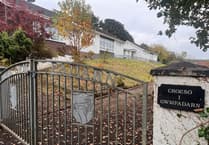In our ongoing A Day in My Life series, Annett Birkett, an engineer in flooding, land drainage and coastal protection for Ceredigion County Council’s Highways and Environmental Services, takes us through what her job entails.
In 2006, I started as a technician with the Highway Department of Ceredigion County Council.
Since 2007, I have been an engineer in the flooding, land drainage and coastal protection section of what is now called Highways and Environmental Services (previously known as Technical Services).
Initially, I gave advice to the Planning Department, as a statutory consultee as part of the planning process on general drainage and flooding issues.
I also dealt with localised flooding problems, land drainage and coastal protection works.
After the 2007 summer floods in Wales, where exceptionally heavy rain caused flash flooding in parts of Wales and the River Severn overflowed its banks, the profile of flooding was raised from a local issue to a national one.
This meant that my duties developed significantly, as I was acting as consultee for the new legislation that was being introduced.
I attended workshops and steering group meetings to represent and negotiate on behalf of Ceredigion County Council.
This meant I was heavily involved in influencing ideas and solutions into the new legislation, strategies, policies and plans in relation to flood risk management.
Currently my time is split between being at the office and travelling up and down the county carrying out site inspections and speaking to local residents.
I make sure that the council complies with the National Strategy for Flood and Coastal Erosion Risk Management in Wales, which includes investigating all flooding within Ceredigion.
Part of this duty is to issue consents for any works to an ordinary watercourse.
This ensures that the works will not adversely affect the watercourse and/or environment and to safeguard against any increase in flood risk to third parties.
Natural watercourses serve to drain the land and assist greatly in supporting animal and plant life.
Generally, a watercourse is any channel through which water flows and can be natural or man-made, open on the surface or enclosed underground (such as in a culvert).
With the vastness of a rural county like ours, that has an abundance of both natural and man-made watercourses, you can imagine how busy it can get when carrying out site inspections on critical watercourses and communicating with the general public, contractors, developers and landowners.
See this week’s south papers for the full feature, available in shops and as a digital edition now


.png?width=209&height=140&crop=209:145,smart&quality=75)


Comments
This article has no comments yet. Be the first to leave a comment.